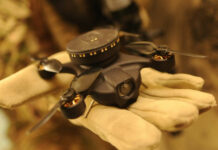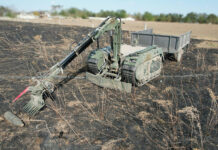Indoor Reconnaissance – Technological Solutions Face the Toughest Counter-Terror Challenge
Counter terror operations rely primarily on intelligence warfare. Fortunately, most terror attacks are foiled in their early stages, as security forces uncover plans, preparations, operatives or their supporters in time. The few operations that manage to hide from the prowling eyes of intelligence services and reach their objectives, are usually coming as total surprise. Usually, these actions are also ‘trend setters’ uncovering an intelligence loophole and a capability gap of the respective counter-terror forces involved.
The Islamic Jihadi terror attacks in Mumbai uncovered several deficiencies that many SOF, CT units and SWAT teams are well aware of – the complexity of indoor reconnaissance and surveillance. Military Operations in Urban Terrain (MOUT) has known to be an extremely complex and the least desired by military commanders. That’s why terrorists have picked the cities as their ‘playground’.
Originally, terrorists would use the city and its civilian population, sympathetic or neutral to their cause, for coverage and concealment, establishing safe houses where they could prepare weapons and explosives, moving through crowded streets and markets to reach their targets unnoticed. By attacking public places, transportation and religious centers their aim was achieve mass casualties to gain maximum publicity effect. In Mumbai, the terrorists picked their playground with a different perspective. By utilizing the complex interior setting of a multi-story building complex, few highly motivated warfighters could hold out against counter terror elements for days, fighting to the death through the illusive indoor maze.
Collecting intelligence from an indoor setting is even more problematic, as visibility, communications and GPS coverage is severely limited, degrading situational understanding, command and control, therefore minimizing the counter-terror forces’ advantage to mere skills and experience.
Every military operation is determined by whom, who dominates the terrain. An open area is controlled by observation and fire. Counter terror operations would seldom utilize snipers for this role. Snipers could be quite effective covering few terrorists taking hostages in a bus or an apartment, but matters get quite complex when the target is located ‘somewhere’ in a multi story mega-hotel. Since indoor movement is extremely dangerous to the CT teams and could result in terrorists executing hostages, gathering information must be done by covert means. Therefore, the vital assessment of the number, location and status of the terrorists and hostages is virtually impossible to achieve.
But is it true? Virtual is the keyword here since the challenge is to obtain ‘hard evidence’, such as pictures or live video. Modern sensors employed with autonomous means could be operated indoor. Some exciting concepts have been described in several science fiction motion pictures, such as ‘Minority Report’.
Capabilities similar to those describedabove are already operational, others are in development or under evaluation at the U.S. Defense Advanced Research Projects Agency (DARPA), collectively managed under the ‘Force Multipliers for Urban Area Operations’ initiative. This program focuses on obtaining revolutionary technologies to make planning and execution of urban operations more responsive and flexible. Among the thrusts of this program are obtaining continued reconnaissance, surveillance and targeting, by the employment of new weapons that can be employed beyond-line-of-sight, with ultra-precise, lethal and nonlethal capabilities.
Our survey of current technologies assisting assault teams engaged in indoor combat covers the following aspects:
















